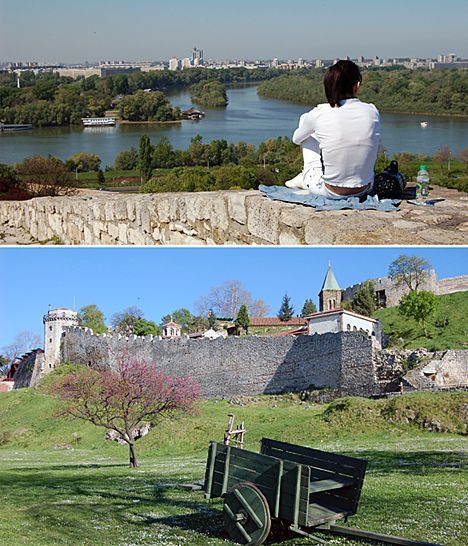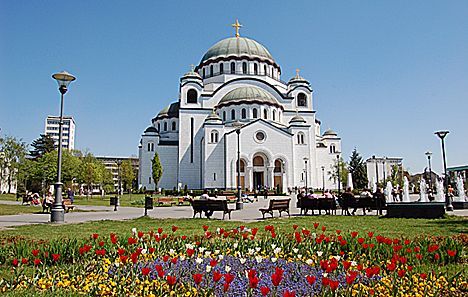Article
Belgrade: The White Fortress
Author(s):
Belgrade has been burned to the ground by conquerors more than 40 times in its long and bloody history. From the Celts to the Romans to the Huns, each have left their mark on this centuries-old city.
Photography by the authors.They came to this place by water thousands of years ago, above the confluence of the two rivers now called the Danube and the Sava. They came armed to invade, burning down the city 44 times over two millennia.
They were the Celts, who established the city in 279 BC, followed by the Romans, then the Goths and the Huns. (Attila’s grave is reputed to be under the city walls.)
The Serbs followed in the 7th century — giving the city their name, which means “white fortress.” Today, it’s called Belgrade. The Bulgarians were next to attack, then the Byzantines and the Hungarians and the Turks, even the Austrians wanted a piece of this land. River access determined the importance of any city in those days, and a river like the Danube -- the second-longest river in Europe after the Volga -- was highly desired. This history lesson is courtesy of our Uniworld guide Slobodan Stetic. This fortress, which commands such a panoramic view of the two rivers, was built in 535AD by the Byzantine Emperor Justinian I, he tells us.

A young Serbian woman sitting on the city wall and watching us, turns and says in English, “You are seeing our history! That island below us is called Great War Island,” she says, “and that tower down there built by the Hungarians to protect the lower town in 1460 was turned into a dungeon by our ‘hosts’ the Turks in the 19th century.” We would read, later, they famously tortured in that prison a prince, an archbishop and a poet.
Across town sits the magnificent St. Sava Cathedral, reputedly the largest active Orthodox temple in the world. It was built on the spot where, in 1595, the Turk Sinan Pasha incinerated the holly relics of St. Sava, one of the most important figures in Serbian history.

The Cathedral of St. Sava is being built at the very spot where in 1595 Sinan Pasha had the holy relics of St. Sava burned at the stake.
It’s not far to Belgrade’s main shopping boulevard, Knez Mihailova Street, where we can view some of the city’s statues and architecture.

The street has been called one of the most attractive promenades areas in Europe. It is certainly popular with the thousands who stroll it each day to marvel at the internationally famous stores now present in Belgrade.
We jealously observe a tourist who found a way to get a great close up of the monument to Prince Mihailo.

Prince Mihailo was preparing an army to free Serbia from Turkish oppression when he was assassinated while walking in the city in 1868.
We are ourselves now walking back to our river boat past young people who are not thinking about their country’s past but enjoying their present. They are on roller blades and bicycles.

Back on the River Countess we find folk dancers similarly showing a more relaxed demonstration of Serbian life than what we were told about within the city walls.
The Andersons, who live in San Diego, are the resident travel & cruise columnists for Physician's Money Digest. Nancy is a former nursing educator, Eric a retired MD. The one-time president of the New Hampshire Academy of Family Practice, Eric is the only physician in the American Society of Travel Writers. He has also written five books, the last called The Man Who Cried Orange: Stories from a Doctor's Life.




